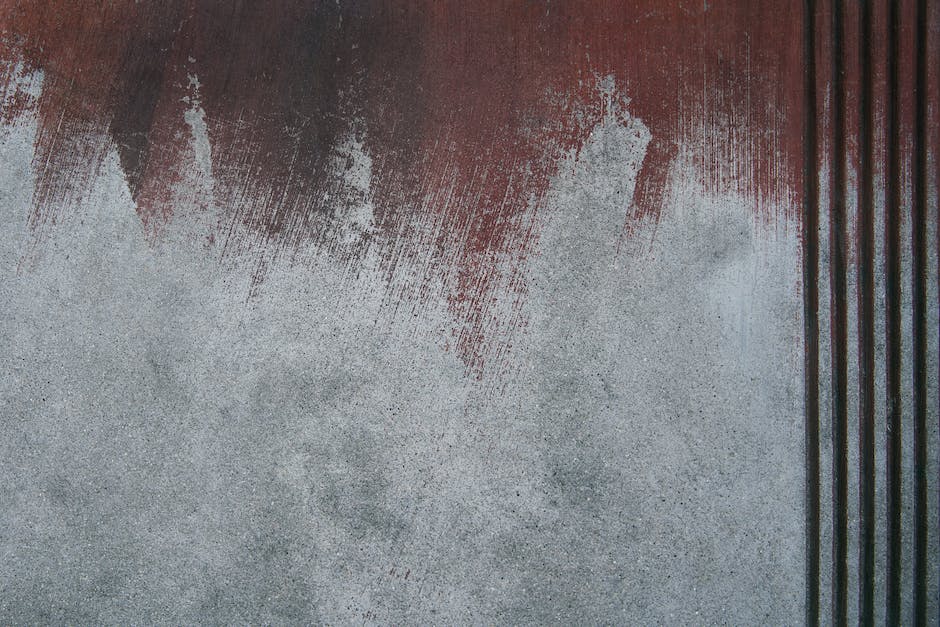Common types of wall stains to remove
You may encounter various kinds of wall stains, such as water stains, grease marks, and crayon or marker stains. Water stains are often brownish or yellow and are caused by leaks or excess moisture. Grease marks can occur in the kitchen or areas where cooking takes place. Crayon or marker stains are common in households with children. Each type of stain requires a different approach for effective removal.

Understanding the importance of identifying the stain
Identifying the type of stain is crucial in removing it effectively. Grease, water, smoke, and ink stains each require specific cleaning methods. Determining the nature of the stain will allow you to select the appropriate cleaning solution and technique, resulting in successful stain removal without damaging the painted surface.
Expert techniques for removing water-based stains from painted walls
When it comes to removing water-based stains from painted walls, it’s important to use the right techniques to avoid damaging the paint. Here are some expert techniques to effectively remove water-based stains from painted walls:
- Dish Soap and Water: Mix dish soap with water to create a gentle cleaning solution that can help remove light water-based stains without damaging the paint.
- Vinegar Solution: A mixture of vinegar and water can also be effective in removing water-based stains from painted walls. The vinegar’s acidity helps break down the stains without harming the paint.
- Baking Soda Paste: For tough stains, create a paste using baking soda and water, then gently scrub the stained area. This mild abrasive can help lift stubborn water-based stains.
By using these expert techniques, you can effectively remove water-based stains from painted walls without causing any damage.
Proven methods for removing oil-based stains from painted walls
If you’re dealing with oil-based stains on your painted walls, there are a few proven methods for removing them. Here’s what you need to know:
- Soap and water: Mix dish soap with warm water and gently scrub the stained area with a sponge or cloth.
- Vinegar and water: Create a solution of vinegar and water, apply it to the stain, and then gently scrub.
- Baking soda paste: Mix baking soda with water to form a paste, apply it to the stain, and let it sit before wiping it away.
These methods have been known to effectively remove oil-based stains from painted walls.
Effective tools and supplies for removing stubborn stains from painted walls
When removing stubborn stains from painted walls, having the right tools and supplies is essential for a successful outcome. Here are some effective items you may need:
- Clean cloths or sponges: Use these to gently blot or wipe the stain, avoiding aggressive scrubbing that could damage the paint.
- Mild detergent or cleaning solution: Mix this with water to create a gentle cleaning solution that won’t harm the paint.
- White vinegar: Effective for removing grease and other tough stains without damaging the paint.
- Baking soda: Helpful for gently scrubbing away stains without causing abrasion to the paint.
- Soft-bristled brush: Use a soft brush to gently scrub away certain types of stains, being careful not to damage the paint.
Make sure to assess the type of stain and the type of paint before using any of these tools to avoid any potential damage.
Best practices for preventing paint damage while removing stains
To prevent paint damage when removing stains from walls, follow these best practices:
- Test cleaning solutions: Before applying any cleaning solution to the stained area, test it on a small, inconspicuous part of the wall to ensure it doesn’t cause any damage.
- Use gentle cleaning methods: Start by gently wiping the stain with a mild detergent and water solution. Avoid using abrasive sponges or harsh chemicals that could damage the paint.
- Work in small sections: Focus on one small area at a time to prevent excessive moisture from seeping into the paint and causing damage.
- Rinse and dry: After cleaning the stained area, make sure to thoroughly rinse the wall with clean water and then dry it with a soft, clean cloth to prevent water damage.
Following these best practices can help you effectively remove stains from painted walls without causing damage to the paint.
Insider tips for tackling tough stains on different types of painted walls
Tackling tough stains on painted walls can be challenging, but with the right techniques, you can effectively remove them without causing damage. Here are some insider tips to help you deal with stains on different types of painted walls:
- Prepare the Surface: Before attempting to remove the stain, make sure to prepare the surface by cleaning it thoroughly with a mild detergent and water. This will help to remove any surface dirt and grime that could interfere with the stain removal process.
- Identify the Paint Type: Different types of paint, such as flat, satin, or gloss, require different cleaning techniques. It’s important to know the type of paint on your walls before attempting to remove a stain to avoid damaging the finish.
- Spot Test: Always perform a spot test in an inconspicuous area before applying any cleaning solution to the stained area. This will help you ensure that the cleaning solution doesn’t cause discoloration or damage to the paint.
- Use Gentle Cleaning Solutions: For water-based stains, such as food or drink spills, try using a mild detergent solution to remove the stain. For oil-based stains, like grease or crayon marks, a mild solvent may be necessary.
By following these tips and using the appropriate cleaning techniques for your specific type of painted walls, you can effectively remove tough stains without causing damage to the surface.
Testing a small area before applying stain removal techniques
Before diving into full-scale stain removal, it’s a good idea to do a small test in an inconspicuous area of the painted wall to make sure the technique won’t damage the paint or make the stain worse. Testing a small area allows you to ensure that the method you plan to use is safe for your wall and won’t cause any further damage. Simply apply the chosen stain removal method to a small, hidden area, and wait to see how the paint reacts.
How to safely dispose of stain removal materials
After removing stains from your walls, it’s important to dispose of the materials safely. Here are the steps you can follow:
- Let the materials dry: Ensure that any used cloths, sponges, or paper towels are completely dry before disposal to prevent any potential chemical reactions.
- Check local regulations: Check your city or town’s regulations on disposing of household cleaning products to make sure you are following the proper guidelines.
- Separate hazardous waste: If the stain removal materials are considered hazardous waste, such as those containing chemicals or solvents, it’s essential to dispose of them separately. Look for a designated hazardous waste disposal facility in your area.
Remember, it’s crucial to dispose of stain removal materials in a way that is safe for the environment and your community.
Summary and final tips for successful stain removal from painted walls
After trying different methods, it’s important to remember to always test any cleaning solution on a small, inconspicuous area of your wall to make sure it won’t damage the paint. For stubborn stains, a mixture of baking soda and water can help lift them. If water and baking soda don’t do the trick, try using a small amount of white vinegar and water. Remember to always start with the mildest solution and work your way up to stronger ones if necessary. If none of these methods work, it may be time to call in a professional to avoid causing any damage to the paint on your walls.



